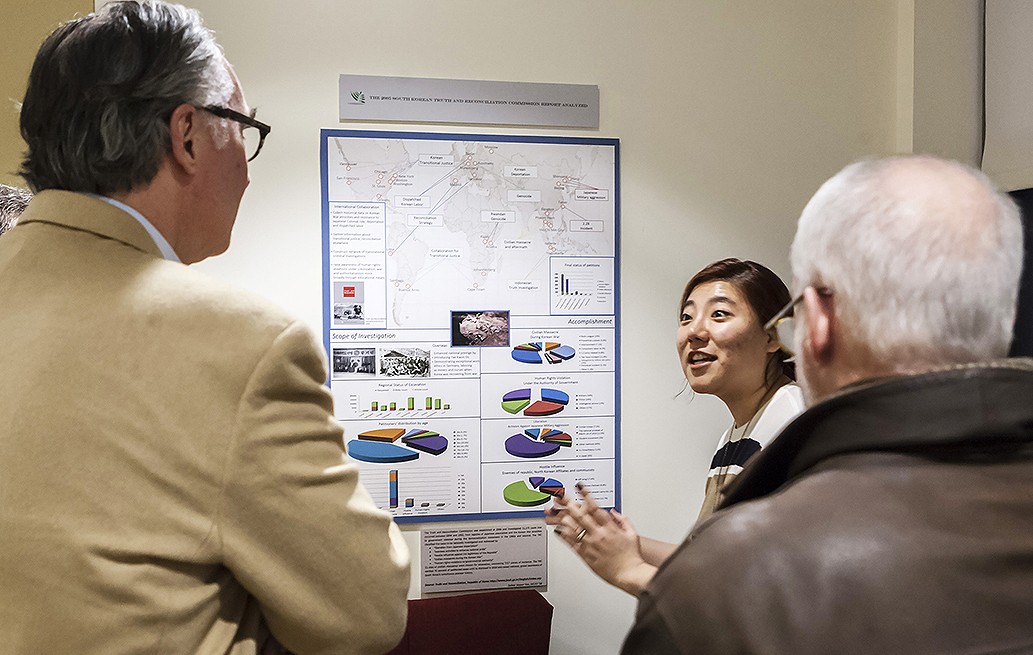Photos by Julia Hopkins
The latest student-created exhibit in the “Making History Public” series focuses on a challenging subject: righting historical wrongs at the turn of the millennium.
The exhibit, now on view in Stokes Hall, features student-designed visualizations on historical justice issues from interdisciplinary, global, local, and comparative perspectives.
The exhibit is the seventh created through a course collaboration between the History Department and University Libraries, which enables undergraduates to gain valuable experience in planning, researching, and organizing a research project, and in learning how to utilize archival material.
Past “Making History Public” subjects have included the history of the Boston Common, the history of the book, and the depiction of historical and social trends in popular comic books.
The current exhibit grew out of a class taught by Associate Professor of History Franziska Seraphim. Among its case studies are Japanese-American internment compensation, indigenous movements worldwide, and global human rights.
“This exhibit marks the first time students did not select from existing materials but rather made their own poster-size infographics, using digital mapping and graphic design to visually analyze a large, complex topic both conceptually and through case examples,” said Seraphim, who credits O’Neill Library staffers for their help.

Seraphim says the exhibit goes beyond specific, isolated cases to capture “global connections.” The use of digital mapping, with help from the library, “seemed like a promising thing to do," he said.
Shane Ewing ’18, who worked on the exhibit, affirmed the global scope of the project.
“We do not want people to focus exclusively on the injustices they care most about,” he said. “We encourage viewers to analyze injustices with which they are unfamiliar.
“Like the global networks of researchers, museums, and NGOs which learn how to better advance memory and justice from each other, I hope those who view this exhibit will see how interwoven justice movements are. We do not exist as communities in isolation and we have much to learn from those outside our immediate communities.”
The exhibit is on display in the History Department, located on the third floor of Stokes Hall, for the rest of the semester.
–Siobhan Sullivan / University Communications




